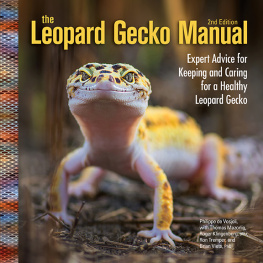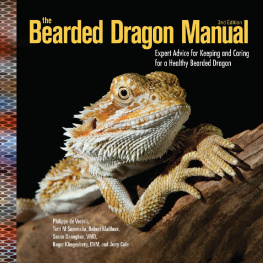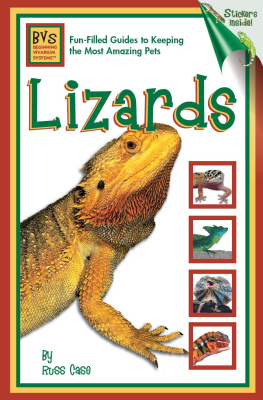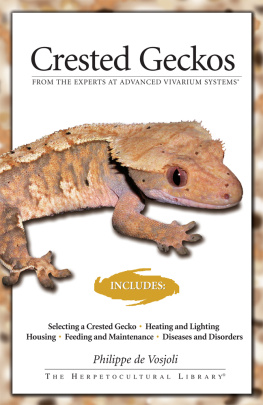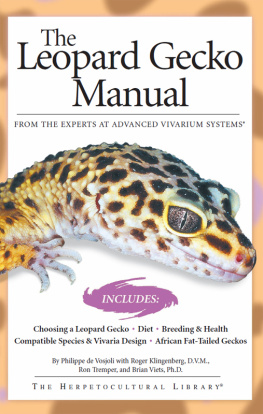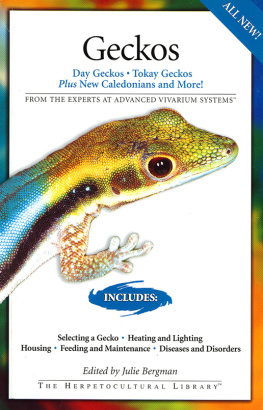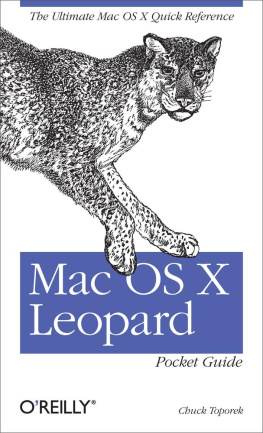
THE LEOPARD GECKO MANUAL
CompanionHouse Books is an imprint of Fox Chapel Publishers International Ltd.
Project Team
Editorial Director: Christopher Reggio
Editor: Amy Deputato
Copy Editor: Laura Taylor
Design: Wendy Reynolds
Index: Jay Kreider
Copyright 2017 by Fox Chapel Publishers International Ltd.
All rights reserved. No part of this book may be reproduced, stored in a retrieval system, or transmitted in any form or by any means, electronic, mechanical, photocopying, recording, or otherwise, without the prior written permission of Fox Chapel Publishers, except for the inclusion of brief quotations in an acknowledged review.
Library of Congress Cataloging-in-Publication Data
Names: De Vosjoli, Philippe, author. | Mazorlig, Tom, author. | Klingenberg, Roger J., 1954- author. | Tremper, Ron, author. | Viets, Brian E., author.
Title: The leopard gecko manual : expert advice for keeping and caring for a healthy leopard gecko / Philippe de Vosjoli, Tom Mazorlig, Robert Klingenberg, DVM, Ron Tremper, and Brian Viets, PhD.
Description: 2nd edition. | Mount Joy, PA : Fox Chapel Publishing, [2017] | Includes bibliographical references and index.
Identifiers: LCCN 2017027735 (ebook) | ISBN 9781620082256 (ebook)
Subjects: LCSH: Leopard geckos as petsHandbooks, manuals, etc.
Classification: LCC SF459.G35 (ebook) | LCC SF459.G35 D42 2017 (print) | DDC 639.3/95dc23
LC record available at https://lccn.loc.gov/2017028427
This book has been published with the intent to provide accurate and authoritative information in regard to the subject matter within. While every precaution has been taken in the preparation of this book, the author and publisher expressly disclaim any responsibility for any errors, omissions, or adverse effects arising from the use or application of the information contained herein. The techniques and suggestions are used at the readers discretion and are not to be considered a substitute for veterinary care. If you suspect a medical problem, consult your veterinarian.
Fox Chapel Publishing, 903 Square Street, Mount Joy, PA 17552
Fox Chapel Publishers International Ltd., 7 Danefield Road, Selsey (Chichester), West Sussex PO20 9DA, U.K.
www.facebook.com/companionhousebooks
Introduction
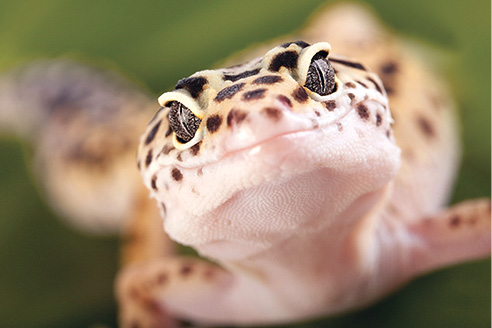
S ince the publication of my first book on leopard geckos in 1990, the herpetoculture of this species has undergone a revolution, transforming the leopard gecko into the first domesticated species of lizard. The leopard gecko is now the reptilian version of the parakeet or goldfish. As with goldfish, selective breeding for xanthism (predominance of yellow and orange skin pigments produced by cells called xanthophores ) launched the course for domestication. Today, a number of leopard gecko morphs are commercially available, with many more on the horizon. As with fancy goldfish or koi carp, breeders eagerly seek prize specimens, which can fetch hundreds or even thousands of dollars.
Like other domesticated animals, the leopard gecko has certain characteristics that make it particularly suitable for this kind of endeavor. It is one of the hardiest of all lizard species: easy to keep, easy to breed, and potentially long-lived. It is a convenient size, neither too small to be appreciated and handled nor so large that it presents risks or requires an enclosure that cant be readily integrated into the average household. And the leopard gecko is undeniably beautiful, from the near-velvet texture of its skin to its gold eyes and pastel shades of color. Like other animals developed as forms of living art, the leopard gecko is extremely variable in color and pattern. These lizards also have nice personalities, by reptilian standards. By the time they are adults, many leopard geckos become quite docile and are slow and deliberate in their movements. The leopard gecko is one of the finest pets you could own.

Why Use Scientific Names?
If you are new to keeping reptiles as pets, it may seem odd to see scientific names (these are the strange-looking words in italics that come after the familiar name of an animal). Scientific names are used commonly within the reptile- and fish-keeping communities.
The scientific name of an animal is agreed upon by the global scientific community and is used instead of any regional names for a given animal. The leopard gecko is Eublepharis macularius whether you are in Maine or Mozambique, whether you are speaking English or Estonian.
Scientific names ensure that everyone is discussing the same organism. If someone says green tree frog, you dont know if that person means the commonly seen green tree frog of the United States or another type of tree frog that happens to be green. However, if the person instead refers to Hyla cinerea , you can be sure that it is the common American frog known as the green tree frog.
Scientific names are composed of two words. The first word is capitalized and is called the generic name. A genus is a group of closely related species, and this word tells you which genus the animal is in. Leopard geckos are in the genus Eublepharis . The second word is always lowercase and is called the specific name. This word tells you the exact species in question. For the leopard gecko, this is macularius . When you put the two together, it forms a unique combination that identifies the exact species.
On occasion, you may see a scientific name that has three parts. The third word is the subspecies. A subspecies is a variation of a species. The variation is not great enough for these animals to be considered a separate species, but it is distinct enough to be given some recognition. With further research, sometimes subspecies are elevated to full species; other times, the subspecies designation is eliminated because the variation was not considered truly distinct.
When a scientific name is used once in a given work, the generic name can be abbreviated to the first letter when it appears again: for example, E. macularius . With subspecies, you can abbreviate both the generic and specific names and retain the full subspecies name.
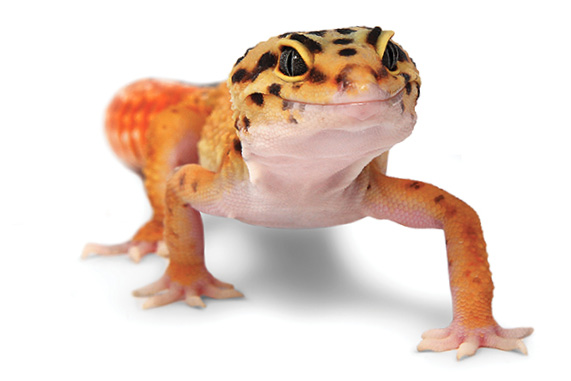
CHAPTER 1
Introducing the Leopard Gecko
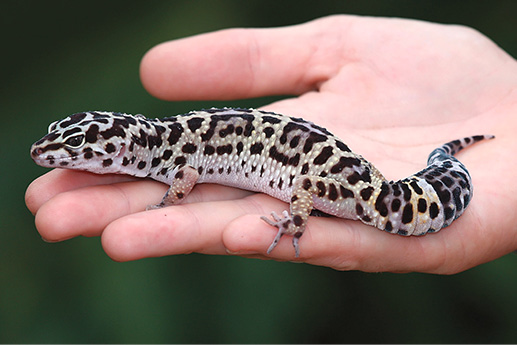
T o start with the very basics, what is a leopard gecko? Leopard geckos are small lizards that are members of a hugely diverse group called geckos . Normally colored leopard geckos are pale yellow with numerous darker spots, which is why they are called leopard geckos. They are personable, with ever-smiling faces that have won them legions of fans. They are most active at night and feed primarily on insects and any other small animals that they can catch. Their attractive appearance and ease of care have made these lizards one of the most popular pet reptiles in the world.
Scientifically speaking, all geckos belong to an infraorder called Gekkota and are classified into seven different families. Older references consider the geckos to all belong to one family, Geckonidae, but Geckonidae is now considered as just one of the families of geckos within the infraorder Gekkota. Geckos are believed to be more closely related to each other than to other lizards. There are at least 1,500 species of geckos found in warm regions around the globe.
Next page
